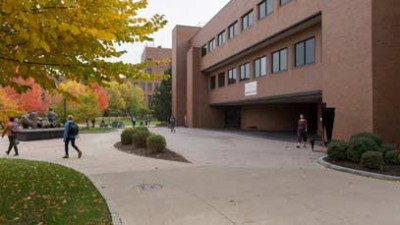Literature and Media Minor
- RIT /
- College of Liberal Arts /
- Academics /
- Literature and Media Minor
Featured Work and Profiles
-
Meet Cassandra Paul, May 2025 AdPR Grad
Experiences in and out of the classroom helped this Advertising and Public Relations major grow as a leader, explore new experiences, and prepare for a career in digital marketing, advertising, and...
Read More about Meet Cassandra Paul, May 2025 AdPR Grad
Curriculum for 2025-2026 for Literature and Media Minor
Current Students: See Curriculum Requirements
Contact
Program Contact
- Julie Johannes
- Principal Lecturer, English
- Department of English
- College of Liberal Arts
- 585‑475‑2467
- jmwgla@rit.edu
Offered within
the
Department of English
Department of English
Search RIT
This website uses cookies to provide better user experience and functionality. You can control and configure cookies in your web browser.
Cookie Statement
|
How to Disable Cookies




